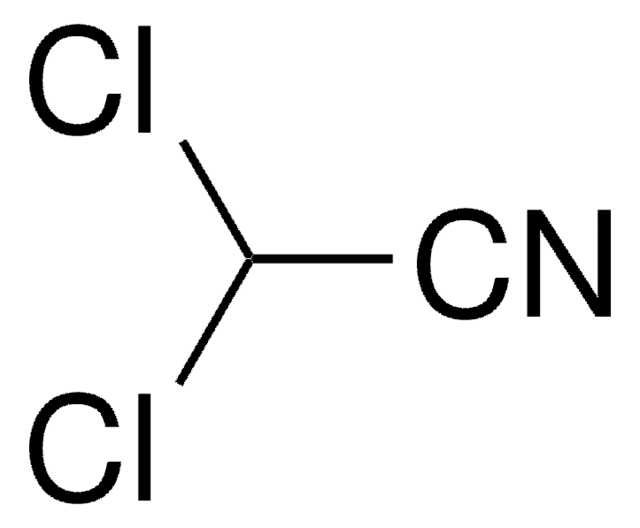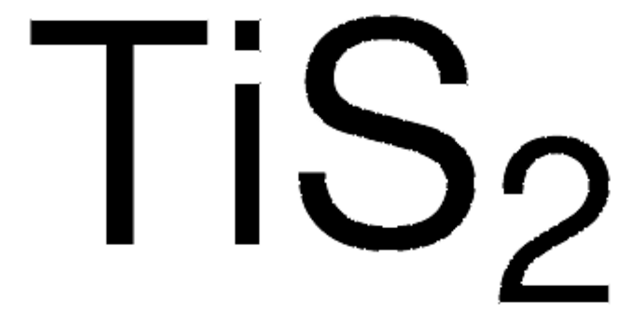778117
Iron disulfide
powder, −325 mesh, 99.8% trace metals basis
Synonym(s):
Ferrous disulfide
Sign Into View Organizational & Contract Pricing
All Photos(1)
About This Item
Empirical Formula (Hill Notation):
FeS2
CAS Number:
Molecular Weight:
119.98
EC Number:
UNSPSC Code:
12352300
NACRES:
NA.23
Recommended Products
Assay
99.8% trace metals basis
form
powder
reaction suitability
reagent type: catalyst
core: iron
particle size
−325 mesh
mp
450 °C (lit.)
application(s)
battery manufacturing
InChI
1S/Fe.S2/c;1-2/q+2;-2
InChI key
NIFIFKQPDTWWGU-UHFFFAOYSA-N
Related Categories
Application
Iron Disulfide has attracted significant interest as a material for photovoltaics(1) and lithium ion battery cathodes(2). Iron disulfide is also studied as a potential material for the sequestration of environmental contaminants(3).
Storage Class Code
11 - Combustible Solids
WGK
WGK 3
Flash Point(F)
Not applicable
Flash Point(C)
Not applicable
Certificates of Analysis (COA)
Search for Certificates of Analysis (COA) by entering the products Lot/Batch Number. Lot and Batch Numbers can be found on a product’s label following the words ‘Lot’ or ‘Batch’.
Already Own This Product?
Find documentation for the products that you have recently purchased in the Document Library.
Customers Also Viewed
Xiaofen Wu et al.
FEMS microbiology ecology, 84(3), 555-563 (2013-02-02)
Soils containing an approximately equal mixture of metastable iron sulfides and pyrite occur in the boreal Ostrobothnian coastal region of Finland, termed 'potential acid sulfate soil materials'. If the iron sulfides are exposed to air, oxidation reactions result in acid
M Oggerin et al.
Environmental microbiology, 15(8), 2228-2237 (2013-02-22)
Río Tinto (Huelva, southwestern Spain) is an extreme environment with a remarkably constant acidic pH and a high concentration of heavy metals, conditions generated by the metabolic activity of chemolithotrophic microorganisms thriving in the rich complex sulfides of the Iberian
Zenghui Diao et al.
Water research, 47(13), 4391-4402 (2013-06-15)
Acid mine drainage (AMD) resulting from the oxidation of pyrite and other metal sulfides has caused significant environmental problems, including acidification of rivers and streams as well as leaching of toxic metals. With the goal of controlling AMD at the
Jiri Kucera et al.
Antonie van Leeuwenhoek, 103(4), 905-919 (2013-01-08)
In contrast to iron-oxidizing Acidithiobacillus ferrooxidans, A. ferrooxidans from a stationary phase elemental sulfur-oxidizing culture exhibited a lag phase in pyrite oxidation, which is similar to its behaviour during ferrous iron oxidation. The ability of elemental sulfur-oxidizing A. ferrooxidans to
Jose M Nieto et al.
Environmental science and pollution research international, 20(11), 7509-7519 (2013-04-17)
Acid mine drainage in the Iberian Pyrite Belt is probably the worst case in the world of surface water pollution associated with mining of sulphide mineral deposits. The Iberian Pyrite Belt is located in SW Iberian Peninsula, and it has
Our team of scientists has experience in all areas of research including Life Science, Material Science, Chemical Synthesis, Chromatography, Analytical and many others.
Contact Technical Service











